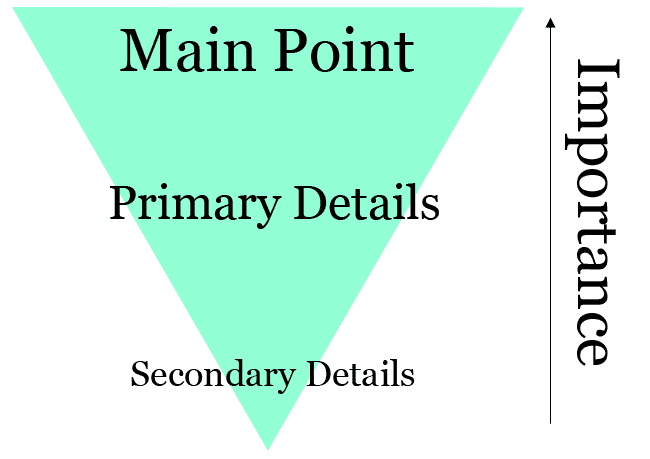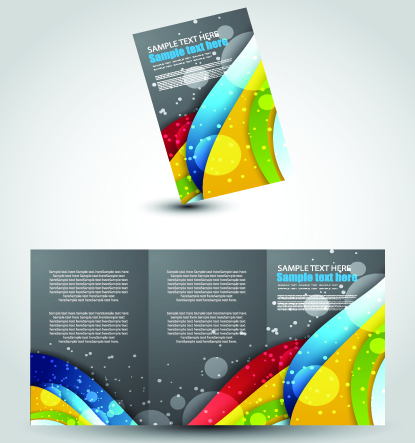Creating a Structure for Persuasive Copywriting

You probably wouldn’t enjoy a book with a structure that didn’t make sense. Similarly, copywriting is most effective when it has a logical structure.
Imagine reading a novel with the chapters out of order. The story might start with an exciting climax, followed by suspenseful rising action leading to character introductions at the very end. You might be able to piece together the story with some effort, but how likely would you be to keep reading if you had no sense of the characters halfway through the book? Without a proper structure, a story can be practically indecipherable–and the same goes for persuasive advertising and business writing.
Structure plays a key component in how we process information. When we read a book, we expect there to be a clear beginning, middle and end. Hand us a newspaper, and we want all the facts at the beginning and the details at the end.
Successful business writing is no different. Creating an outline based on an effective copywriting structure not only makes it easier to write, but makes it easier for your audience to decipher your message.
Before creating an outline, start with the basics: determine whether you’re using a direct or indirect approach.
Direct approach: the inverted pyramid
One possible format for persuasive business writing is the “inverted pyramid” style. This is most commonly used in journalism, but it has value from a marketing perspective as well–particularly for “news-like” corporate communications such as press releases.
The inverted pyramid is a very direct approach to marketing; it leads with the main idea you want your audience to understand (or the action you want them to take) and follows with evidence and details that support your main point.

The less need there is to persuade your audience, the more direct you should be. Use an inverted pyramid structure when addressing someone familiar with your business or brand, such as a longtime customer or valued employee. If you’re already expecting a positive reaction to your message, a direct approach will be more effective.

A press release announcing a cat food recall would begin with the main point right away, followed by supporting details.
Here’s an example: say you’re sending out a press release announcing a product recall on a line of cat food. You don’t need to be very persuasive with your audience since they’ve already purchased your product. You wouldn’t open with a sentence like “Keeping our pets safe and healthy is important to all of us.” That kind of goes without saying, and “burying the lead” like this is just going to frustrate people.
With a situation like this, you’re going to want to cut straight to the chase. That means opening up right away with your main point (“Our company is announcing a recall on the following products”) and following up with supporting details (such as why the product is being recalled).
In this example, our outline might look something like this:
- Lead (Company X is issuing a recall on Tastee Cat Food)
- Supporting Details
- Why the product is being recalled
- Places where the product was distributed
- How to identify the product
- How the problem with the product was discovered
- Call to Action (Return the product to place of purchase for a refund, what to do if your pet has already consumed recalled food)
Notice that our call to action is at the end. Call to action placement is a bit situational; it may work best at the end of your writing, even if you’re using a direct approach. This particular call to action is of vital importance, but it makes sense to place it at the end because that’s where the reader is likely to look for it (once they’ve taken in all of the details related to where the product is being recalled from, etc.).
If, on the other hand, you were sending out a communication urging employees to join the company’s social media network, you’d likely lead with a call to action (“Join our Facebook group!” along with a URL where they can find it). This would still be a direct approach because you’re opening with the most important point and following up with supporting details (the various benefits employees would receive by joining the group). Even in examples like this one, it would make sense to conclude with another call to action at the end.
Indirect approach: the AIDA marketing model
This is the type of structure that people usually associate with persuasive marketing and advertising. When attempting to convince someone to purchase your product or service, a direct approach rarely works. You almost never see a magazine ad, mailer, or even a TV commercial that begins by exclaiming “Buy our product!” It comes across as rather desperate, and audiences aren’t likely to take this sort of action unless they’ve already been given a good reason to. For audiences whom you expect to be resistant to your message, an indirect approach is generally the best kind.
Think of the indirect approach as similar to fishing for trout. You can’t just charge in and try to catch the fish with your bare hands; they’ll get scared and swim away. Instead, you have to let them come to you by offering something attractive–the “bait” in this case being the benefit your product can provide.
This sort of structure is really just a “non-inverted” pyramid: it begin by offering up benefits and supporting details that lead up to a main point (usually a call to action). Many like to describe this type of outline with the acronym “AIDA”: Attention, Interest, Desire, Action.

The same way you’d catch a rat by first offering it a piece of cheese, it’s easiest to acquire a new customer by first offering him or her a benefit.
-
Attention
Begin by igniting your audience’s attention. This is often done with an eye-catching headline that points out a particular benefit or pain point that the audience will identify with. An ad for no-kill rat traps, for instance, might begin with “Eliminate pests the humane way.”
-
Interest
Now that your reader has taken notice, you need to maintain their interest. One way to achieve this by telling a “story” that the audience can relate to. You don’t need to specifically introduce your product or service yet; just get them fully invested in solving their problem. Our rat trap ad might go on to say something like: “You love animals…but you also want your home free of rodent-related disease and damage.” It might then provide additional details, such as the various health risks that rat infestations can pose or the positive benefits of using humane traps.
-
Desire
Your reader is hungry for a solution, so offer them a carrot. This is where you start to draw a connection between the benefit and your product. “Armistice Rat Traps eliminate rats safely and humanely, without killing them.” You can support this with additional benefits, facts, and testimonials, such as “Our traps cost a fraction of the price of the leading brand,” or “Endorsed by top animal welfare organizations.”
-
Action
Naturally, this is your call to action; everything else you’ve written has led up to this, your most important element. This is where you tell your audience how to access your product or service (and therefore receive the benefits you’ve promised them). Our rat trap ad might inform readers to call a phone number, visit a URL, or visit a physical location.
Some copywriters prefer to describe this approach as the “4 P’s of Persuasion“: Promise, Picture, Proof and Push.
Based on the AIDA model, our outline for the Armistice Rat Trap ad might look something like this:
- Lead (Want to remove rats from your house without killing them?)
- Problem-Related Details
- Risks that rats and other pests pose
- Prevalence of rat infestations
- Safety risks of non-humane traps
- Product-Related Details
- How Armistice traps work
- High success rate
- No messy glue
- Low cost
- Endorsed by animal welfare organizations
- Call to Action (Visit our website to learn more)
Conclusion
Remember that even though the length of your writing (and your outline) may vary, these two basic strucutre models can be used whether you’re composing a short paragraph or an entire brochure.
Creating an effective structure and outline is only one step in the copywriting process. To make your business writing truly engaging, you should continue to flesh out your outline with tone, emotional appeals, and other persuasive advertising techniques.
Anything we missed? Still need tips on how to write the perfect outline? Feel free to leave your thoughts and questions in the comments below.
Posted in Copywriting
Don`t neglect your friends, share this right away.





I have been searching for a website with information about copywriting. I love to write and I desperately need a job. This site has more information then any other website I have found on copywriting. I have added it to my bookmarks. Now I am going to try to find a job. I was so relieved to know I can find information that I believe will be critical to my success.